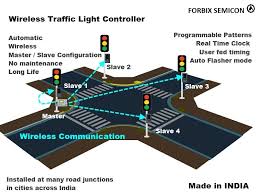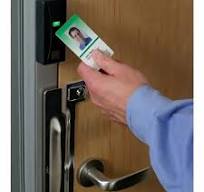With the rapid growth of urban areas and the increasing number of vehicles on the roads, efficient traffic control systems have become essential for managing traffic flow and ensuring road safety. A traffic control system is a sophisticated network of devices and technologies designed to monitor, regulate, and optimize traffic movement on roads, highways, and intersections.
One of the key components of a traffic control system is the use of traffic signals. Traffic signals are strategically placed at intersections to control the flow of vehicles by indicating when to stop, go, or yield. These signals help prevent accidents, reduce congestion, and improve overall traffic efficiency.
Another important aspect of a traffic control system is the implementation of intelligent transportation systems (ITS). ITS utilizes advanced technologies such as sensors, cameras, and communication devices to gather real-time data on traffic conditions. This data is then analyzed to make informed decisions regarding signal timing adjustments, lane management, and incident detection.
Moreover, modern traffic control systems often incorporate smart features such as adaptive signal control technology. Adaptive signal control systems use algorithms to dynamically adjust signal timings based on current traffic conditions. This dynamic approach helps optimize traffic flow and reduce delays for commuters.
In addition to managing vehicle movements, a comprehensive traffic control system also includes provisions for pedestrian safety. Crosswalks with pedestrian signals, countdown timers, and audible alerts are essential components that ensure safe crossing for pedestrians at busy intersections.
Overall, an effective traffic control system plays a crucial role in enhancing road safety, reducing travel times, and improving overall transportation efficiency in urban areas. By leveraging advanced technologies and intelligent strategies, cities can create a more sustainable and user-friendly transportation network for residents and commuters alike.
7 Essential Tips for Navigating Traffic Safely and Efficiently
- Follow traffic signals and signs.
- Obey speed limits to ensure safety.
- Use turn signals when changing lanes or making turns.
- Maintain a safe following distance from other vehicles.
- Avoid distractions such as texting while driving.
- Yield to pedestrians at crosswalks.
- Be aware of road conditions and adjust your driving accordingly.
Follow traffic signals and signs.
Following traffic signals and signs is a fundamental rule for safe and efficient driving on the roads. Traffic signals and signs are designed to regulate the flow of vehicles, prevent accidents, and ensure smooth traffic movement. By obeying these signals and signs, drivers can communicate their intentions to other road users, anticipate changes in traffic patterns, and navigate intersections with clarity and order. Adhering to traffic signals and signs not only promotes road safety but also contributes to a more organized and predictable driving environment for everyone on the road.
Obey speed limits to ensure safety.
Adhering to speed limits is a fundamental aspect of ensuring safety within a traffic control system. Speed limits are set based on road conditions, traffic volume, and surrounding environments to mitigate the risk of accidents and protect all road users. By obeying speed limits, drivers not only reduce the likelihood of collisions but also contribute to smoother traffic flow and enhanced overall road safety. It is essential for motorists to respect speed regulations as a responsible measure towards safeguarding themselves and others on the road.
Use turn signals when changing lanes or making turns.
Using turn signals when changing lanes or making turns is a fundamental aspect of safe driving and an essential tip for effective traffic control systems. Turn signals communicate your intentions to other drivers on the road, allowing them to anticipate your movements and adjust their driving accordingly. By signaling your intentions in advance, you help create a more predictable and organized traffic flow, reducing the risk of accidents and promoting smoother traffic transitions. Remembering to use your turn signals not only enhances road safety but also contributes to a more harmonious and efficient driving environment for everyone sharing the road.
Maintain a safe following distance from other vehicles.
One important tip for ensuring road safety and efficient traffic flow is to maintain a safe following distance from other vehicles. By keeping a sufficient distance between your vehicle and the one ahead, you allow yourself more time to react to sudden stops or changes in traffic conditions. This not only reduces the risk of rear-end collisions but also helps prevent unnecessary congestion on the roads. Remember, maintaining a safe following distance is a simple yet effective way to promote safety and smooth traffic movement for everyone on the road.
Avoid distractions such as texting while driving.
One crucial tip for ensuring the effectiveness of a traffic control system is to avoid distractions such as texting while driving. Distracted driving, especially due to activities like texting, significantly increases the risk of accidents and compromises road safety. By staying focused on the road and refraining from using mobile devices while driving, motorists can contribute to smoother traffic flow and reduce the likelihood of collisions. Prioritizing attention to the road not only enhances personal safety but also plays a vital role in supporting the overall efficiency of traffic control measures in place.
Yield to pedestrians at crosswalks.
One important tip in a traffic control system is to always yield to pedestrians at crosswalks. Pedestrian safety is paramount, and giving pedestrians the right of way not only ensures their well-being but also promotes a culture of respect and consideration on the roads. By slowing down and allowing pedestrians to cross safely at designated crosswalks, drivers can help prevent accidents and create a more pedestrian-friendly environment for everyone sharing the road.
Be aware of road conditions and adjust your driving accordingly.
Being aware of road conditions is crucial when it comes to navigating through traffic efficiently and safely. By staying informed about factors such as weather conditions, road closures, construction zones, and traffic congestion, drivers can make informed decisions and adjust their driving behavior accordingly. This proactive approach not only helps prevent accidents but also contributes to smoother traffic flow and a more pleasant driving experience for everyone on the road.




